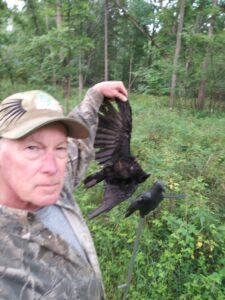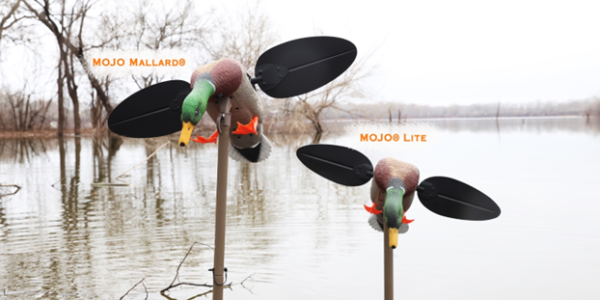It’s Crow Season in Michigan
By Glen Wunderlich
Hunting crows has been a passion of mine for decades, and recently, while watching a YouTube video, I was reminded why I despise the pesky varmints so much. A mother mallard duck with her family of tiny ducklings was being threatened by a lone crow doing its best to out-maneuver the protective mother. Instinct took over, as the young’uns huddled closely under the shield of wings, while parent duck did her best to fend off the incessant attack, when a second crow joined the commotion.
It wasn’t fair, but that’s the way it is with Mother Nature. It was classic predator versus prey – a way of life and death in the wild. I literally found myself searching for the pause button.
I’ve also witnessed crows raiding nests of songbirds, while helpless parental victims do no more than raise a raucous ruckus. Author of The Varmint and Crow Hunter’s Bible, Bert Popowski (1962), elaborates as to the rationale for our depleted songbird population long before crows were a seasonally protected species.
“In some cases a single pair of mated crows, often nesting on the premises, will clean out every songbird nest discovered in a country grove. They will also raid pheasant and other upland game bird nests, plus those of ducks nesting on or near adjacent waters. Since they raid daily, once a nest is discovered, it serves as a crow larder as long as its owners continue to lay eggs in it.
Once the young of such birds are hatched, the raiding goes on at an accelerated pace, for the crows have young of their own now and the family needs are thus intensified. So, the adults slay the young of their victim species wherever they find them inadequately guarded, then take the tender-meated kills to their nests for their own offspring. In many cases, the young of these victim-bird species attract deadly crow attention by their own cheeping for parental attention.”
Imagine this scenario being played out thousands – even millions of times over – and, one can understand why our songbirds continue to decline in numbers. Certainly, other factors such as pesticides are culprits, but protecting crows seems asinine to me.
As crazy as it may seem, Michiganders and hunters from every other state in the nation are permitted to hunt crows no more than 4 months of the year as part of U.S.-Mexico Bird Migration Treaty of 1975 (MIGRATE), unless they are causing a nuisance or creating a health hazard. However, if crows migrate, why are so many in our northern reaches? Obviously, as with Canada geese, fair amounts are permanent residents able to find enough food to stay put. What’s puzzling though, is how it’s decided which birds leave and which of them remain.
In any event, Michigan’s winter crow season is during the months of February and March and participating can be a means to combat the winter doldrums. Electronic callers are the most popular means to get crows within range and by adding a shotgun, shotshells, camouflage, a hideout, a few decoys and an attitude that can tolerate a humbling experience, and you too can become crow active.









